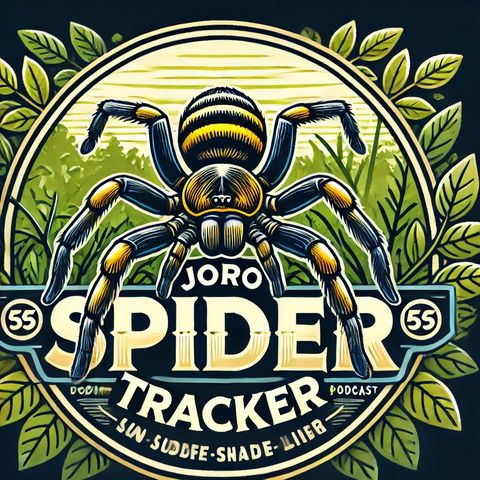Joro Spiders: Captivating Invaders and the Ecological Challenges They Pose

Sign up for free
Listen to this episode and many more. Enjoy the best podcasts on Spreaker!
Download and listen anywhere
Download your favorite episodes and enjoy them, wherever you are! Sign up or log in now to access offline listening.
Description
The Joro spider, a species native to East Asia, has been causing a stir recently, particularly in areas outside its native habitat where it has been introduced. Named after Jorōgumo,...
show moreThe introduction of Joro spiders in regions where they are not native generally raises concerns about their impact on local ecosystems. In their native environments, these spiders play a crucial role in controlling insect populations, and their presence is generally considered beneficial. However, in new environments, there can be unforeseen effects on local biodiversity.
Their ability to adapt to various climates and their prolific breeding habits make Joro spiders highly resilient. This adaptability, while beneficial for the spider's survival, often leads to worries about competition with native species, particularly other spiders. Studies on the ecological impact of the Joro spider in non-native areas are ongoing, but there is a significant investigation into whether they alter the populations of local species, including other arthropods and small insects, which form part of the broader food web.
Public reaction to the spread of Joro spiders varies. Some people express concern over potential negative impacts on local wildlife or discomfort at seeing large spiders and webs in their surroundings. Others may view them as beneficial for natural pest control. Awareness and education about the Joro spider’s role in both its native and invasive environments are crucial in managing populations effectively and mitigating potential ecological impacts.
Management strategies for invasive species like the Joro spider typically involve monitoring their spread, studying their ecological impact, and educating the public on how to coexist with these new organisms. In some cases, control measures may be necessary to prevent significant disruption to native ecosystems. However, such measures need to be science-based and consider both the ecological role of the spiders and the feasibility and consequences of control efforts.
Concern over introduced species such as the Joro spider highlights broader issues of global environmental change, including habitat loss, climate change, and the effects of global human travel and trade which facilitate the spread of species beyond their original borders. Addressing these challenges requires international cooperation and a multi-faceted approach encompassing conservation, environmental management, and biosecurity measures.
Information
| Author | QP-4 |
| Organization | William Corbin |
| Website | - |
| Tags |
Copyright 2024 - Spreaker Inc. an iHeartMedia Company
